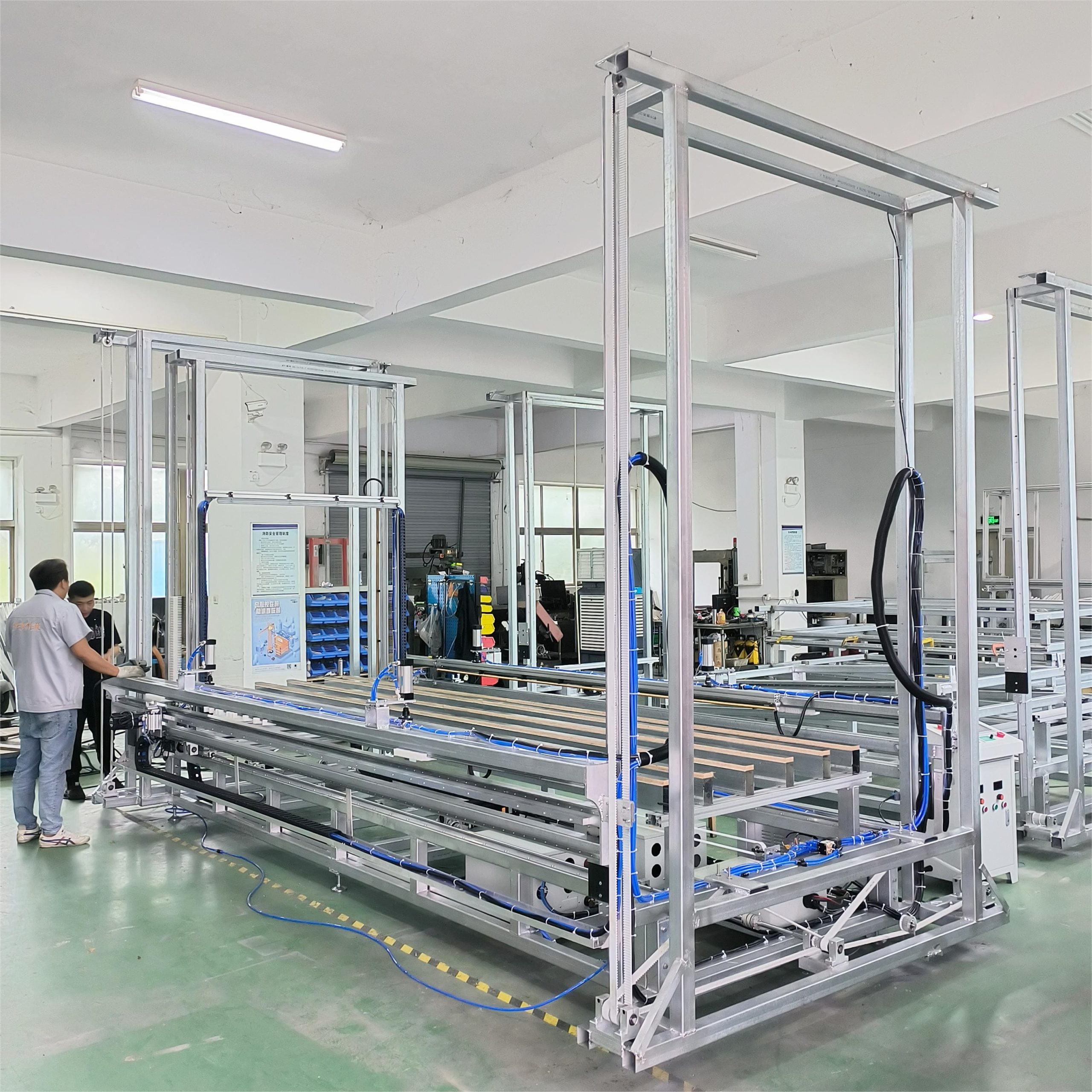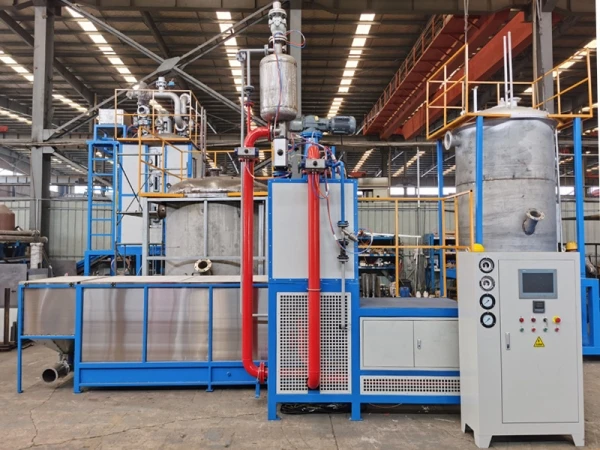Are you struggling to cut polystyrene with precision and ease? This comprehensive guide dives deep into the best methods for cutting polystyrene and styrofoam, whether you’re working on a DIY project, need to cut insulation, or are involved in professional foam fabrication. We’ll explore a range of foam cutter options, from hot wire cutters to hand tools, and provide step-by-step instructions to help you achieve perfect results. This article is worth reading because it offers practical advice, safety tips, and insights that will save you time, money, and frustration.
1. What is the best way to cut polystyrene and styrofoam?
The "best way" to cut polystyrene depends on the project and the desired outcome. For intricate shapes and clean cuts, a hot wire cutter is often the top choice. These tools use a heated wire to melt through the foam, leaving a smooth edge with minimal waste. For straighter, less detailed cuts, you can also consider a long blade utility knife.
Ultimately, the best approach involves selecting the right tool for the job and understanding the cutting technique that minimizes foam dust and ensures accuracy.
2. What is a Hot Wire Cutter and how to Use a Hot Wire Cutter?
A hot wire cutter is a specialized tool designed for efficiently and cleanly cutting foam materials like expanded polystyrene and extruded polystyrene (XPS). It typically consists of a transformer that heats a nichrome wire to a specific temperature. As the heated wire is moved through the foam, it melts the material, allowing for precise and smooth cuts.
To use a hot wire cutter, start by securing your foam piece. Adjust the temperature of the cutting wire to the appropriate level for your foam type. Then, slowly and steadily guide the hot wire along the cutting line. Avoid forcing the cutter; let the heated wire do the work. The clean cut it produces will be a testament to the tool’s effectiveness.
3. How to cut polystyrene with a Hand Saw or Long Blade Utility Knife?
When dealing with polystyrene, especially styrofoam, a long blade utility knife or a hand saw can be viable options. These are excellent hand tools for simple cuts or when a foam cutter isn’t readily available. Using a long blade utility knife, score the foam multiple times to ensure a clean break. For thicker pieces, use a polystyrene cutter.
When cutting polystyrene with a hand saw, choose a fine-tooth blade to minimize tearing. Take your time, apply even pressure, and follow your cutting line. Remember to score the material slightly beforehand, and proceed gently, to avoid breaking the polystyrene haphazardly.
4. Can I Use a Jigsaw to Cut Styrofoam?
Yes, you can use a jigsaw to cut styrofoam, but there are a few things to keep in mind. Use a fine-tooth blade designed for cutting foam. Cut at a low speed to prevent the foam from melting or tearing excessively. Be prepared for more foam dust compared to a hot wire cutter.
While a jigsaw can handle curves and intricate shapes, it might not provide the cleanest cuts compared to a hot wire setup. Moreover, the jigsaw to cut styrofoam is a bit more challenging and requires more dexterity. Always wear a dust mask when using a jigsaw or any other tools to cut foam.
5. What Safety Precautions Should I Take When Cutting Foam?
Safety should always be a top priority when working with foam. Polystyrene generates fumes and foam dust that can be irritating or even harmful. That is why, it’s highly recommended to cut in a well-ventilated area. Moreover, you need to cut wearing a dust mask to avoid inhaling foam dust, and wear a dust mask and safety goggles.
If using a hot wire cutter, be careful not to touch the heated wire. Always unplug the device when not in use. Also, consider wearing gloves to protect your hands. When working with a large amount of electrifying polystyrene, it is important to have dust mask and safety goggles and also to be careful. Always use the right tool for the job.
6. How to Cut Insulation Boards with Precision?
Cutting insulation boards requires precision for a proper fit. Whether you’re using expanded polystyrene insulation board or another type, the goal is to make a straight cut that matches the required dimensions.
A hot wire cutter is often ideal for insulation boards, as it provides clean, straight cuts. Alternatively, a long blade utility knife can work if you score the board several times before applying pressure. Make sure to measure accurately and use a straight edge to guide your cuts. Remember that it’s also recommended for pieces to protect the environment.
7. What Tools Are Used to Cut Polystyrene and Foam?
Several tools are used for cutting foam, each with its strengths:
- Hot Wire Cutter: Best for clean, intricate cuts.
- Long Blade Utility Knife: Useful for straight cuts and scoring.
- Hand Saw: For thicker foam and less precise cuts.
- Jigsaw: Suitable for curves and complex shapes (with precautions).
- Foam Cutter: Used to make the process easier.
Selecting the best tool depends on the foam type, desired cut, and level of detail. For polystyrene cutting, you can use a polystyrene cutter or even a foam cutter.
8. How do I Make a Straight Cut in Polystyrene?
To make a straight cut in polystyrene, follow these steps:
- Measure and Mark: Accurately measure and mark your cutting line on the foam.
- Use a Guide: Employ a straight edge (ruler, level, etc.) to guide your cutter.
- Slow and Steady: Move your cutter along the guide at a consistent, steady pace.
- For Hot Wire Cutters: Ensure the cutting wire is taut and properly heated.
- For Knives or Saws: Apply even pressure and avoid forcing the tool.
The key is to be patient and precise.
9. What are the Benefits of an Adjustable Foam Cutter?
An adjustable foam cutter offers several benefits:
- Versatility: It allows you to cut foam of various thicknesses and shapes.
- Precision: The adjustable settings provide control over the cutting line and depth.
- Efficiency: You can quickly adapt the cutter to different tasks.
- Customization: Some models offer adjustable angle settings for beveled cuts.
These features make an adjustable foam cutter a valuable tool for professionals and serious DIYers alike. You can always adjust the size of wire with it.
10. How to Handle Holes in Polystyrene and Cut Foam Without Making a Mess?
Creating holes in polystyrene and minimizing mess are related challenges:
- Holes: For small holes, a drill with a suitable bit works well. For larger holes, a hot knife or a specialized hole-cutting tool may be better. To avoid cracking, proceed slowly and steadily.
- Mess: A foam cutter is often the neatest way to cut polystyrene, producing minimal foam dust. Always work over a surface that is easy to clean. Consider using a vacuum cleaner to remove any stray foam dust. Ensure you have a dust mask and wear dust mask and safety goggles.
11. What are the Benefits of Using a Hot Wire Foam Cutter?
A hot wire foam cutter offers several advantages over other cutting foam methods:
- Clean Cuts: The heated wire melts the foam, leaving a smooth, precise edge.
- Intricate Shapes: You can easily cut curves, angles, and complex designs.
- Minimal Waste: There is little material loss compared to saws or knives.
- Speed: Hot wire foam cutters can be quicker than manual methods, especially for large projects.
- Versatility: It works well with various types of foam, including expanded polystyrene and extruded polystyrene.
12. What are the Best Practices for Selecting the Right Foam Cutter?
When selecting the best foam cutter for your needs, consider these factors:
- Type of Foam: Make sure the cutter is compatible with the foam you’re working with.
- Project Requirements: Consider the complexity of cuts, the need for precision, and the volume of foam you’ll be cutting.
- Features: Look for adjustable settings, ease of use, and safety features.
- Budget: Determine how much you’re willing to spend on a cutter.
You can choose a suitable foam cutter with a good grip and control. Consider the power source. And also consider the size of wire when selecting the tool.
13. How to Minimize Foam Dust When Cutting Polystyrene?
Foam dust is an unavoidable byproduct of cutting polystyrene, but there are ways to minimize it:
- Use a Hot Wire Cutter: The cleanest cuts generate the least foam dust.
- Cut Slowly and Steadily: Avoid fast movements that can tear the foam.
- Work in a Well-Ventilated Area: Ensure fresh air circulation to disperse any fume and foam dust.
- Use a Vacuum Cleaner: As you work, vacuum up loose foam dust.
- Wear a Dust Mask: Protect yourself from inhaling any foam dust.
These tips can help you keep your workspace clean and safe.
14. Can I Use a Craft Knife to Cut Polystyrene?
Yes, a craft knife, especially a long blade utility knife, can be used to cut polystyrene, particularly thin pieces. However, it’s most effective for straight cuts.
- Technique: Use a fresh, sharp blade. Score the foam repeatedly along your cutting line. Apply gentle pressure and let the blade do the work.
- Limitations: It is less suitable for thicker foam or intricate shapes. It can also be more time-consuming and produce less precise cuts compared to a hot wire cutter.
- Safety: Be careful to avoid cutting yourself. Always cut away from your body.
When you need to cut thin pieces of polystyrene you can easily cut it.
15. What Is the Best Way to Cut Polystyrene Foam Without a Mess?
The neatest way to cut polystyrene foam without a mess is almost always with a hot wire foam cutter. Here’s why:
- Melting, Not Cutting: The hot wire melts the foam, creating a clean edge without tearing or shredding material.
- Minimal Dust: Because the foam is melted, there is very little foam dust generated.
- Smooth Edges: The resulting edges are smooth and ready for use, with no need for sanding or finishing.
- Speed and Efficiency: Hot wire foam cutters allow for quick and efficient cuts.
- Versatility: They can handle a wide variety of shapes and thicknesses of foam.
Although a hot wire cutter might require a bit of initial investment, it’s the right tool for anyone who wants to cut the foam with a perfect cut and minimal cleanup.
16. What are some Other Useful Tips for Cutting Polystyrene?
Here are a few additional tips to enhance your polystyrene cutting experience:
- Practice on Scrap: Before cutting your final piece, practice on scrap foam to get familiar with the tool and technique.
- Use a Straight Edge: Always use a straight edge to guide your cuts, especially for long or straight lines.
- Take Breaks: If you’re working on a large project, take breaks to avoid fatigue and maintain accuracy.
- Clean Your Tools: Keep your tools clean and well-maintained for optimal performance.
- Be Patient: Cutting foam takes time and patience, so don’t rush the process.
- Right Tool for the Job: Make sure you are using the right tool.
By following these tips, you can improve your polystyrene cutting skills and achieve professional-looking results. Also, for safety, wear a dust mask and safety goggles while you cut the polystyrene.
Summary: Key Takeaways
- Hot wire cutters are ideal for precise, clean cuts in foam.
- Hand tools like long blade utility knives and saws are useful for simpler tasks.
- Always prioritize safety: wear a dust mask and work in a well-ventilated area.
- Choose the right tool for the job and take your time for the best results.
- Consider an adjustable foam cutter for versatility.
If you’re looking for reliable EPS and EPP machinery, explore our range of EPS Pre-expander Machines, EPS Block Moulding Machines, and EPS Shape Moulding Machines to boost your production efficiency.
Post time: 02-10-2025







